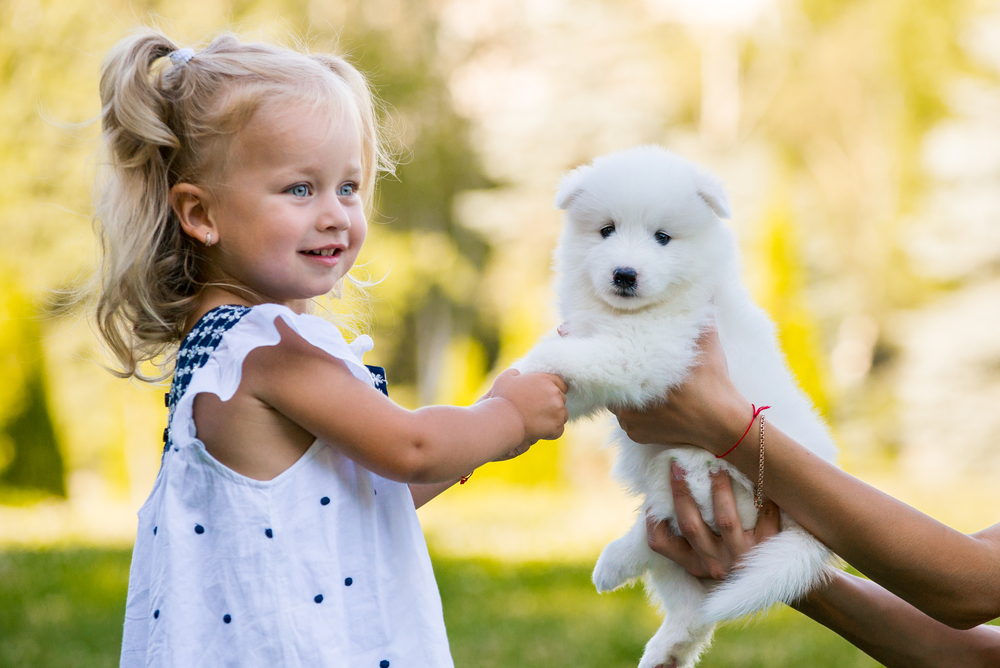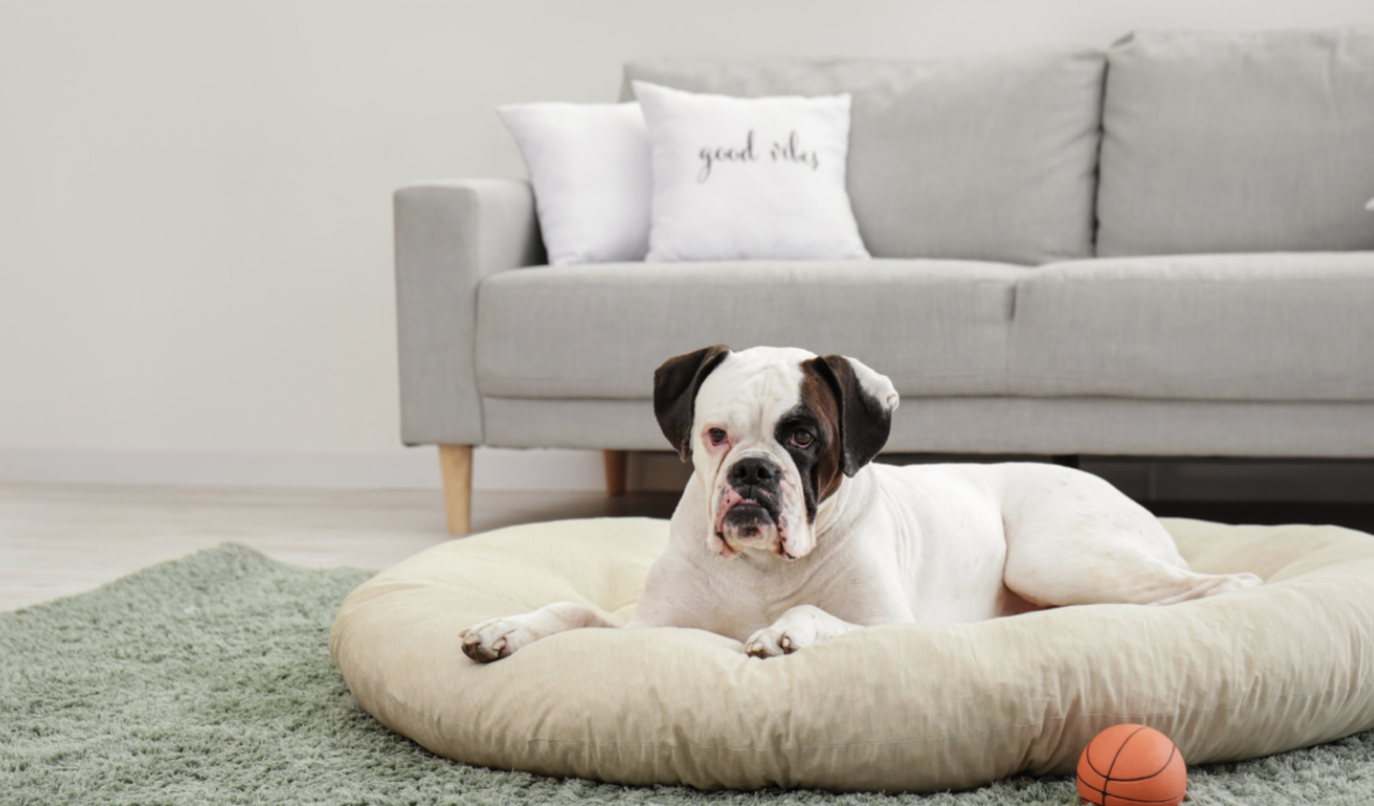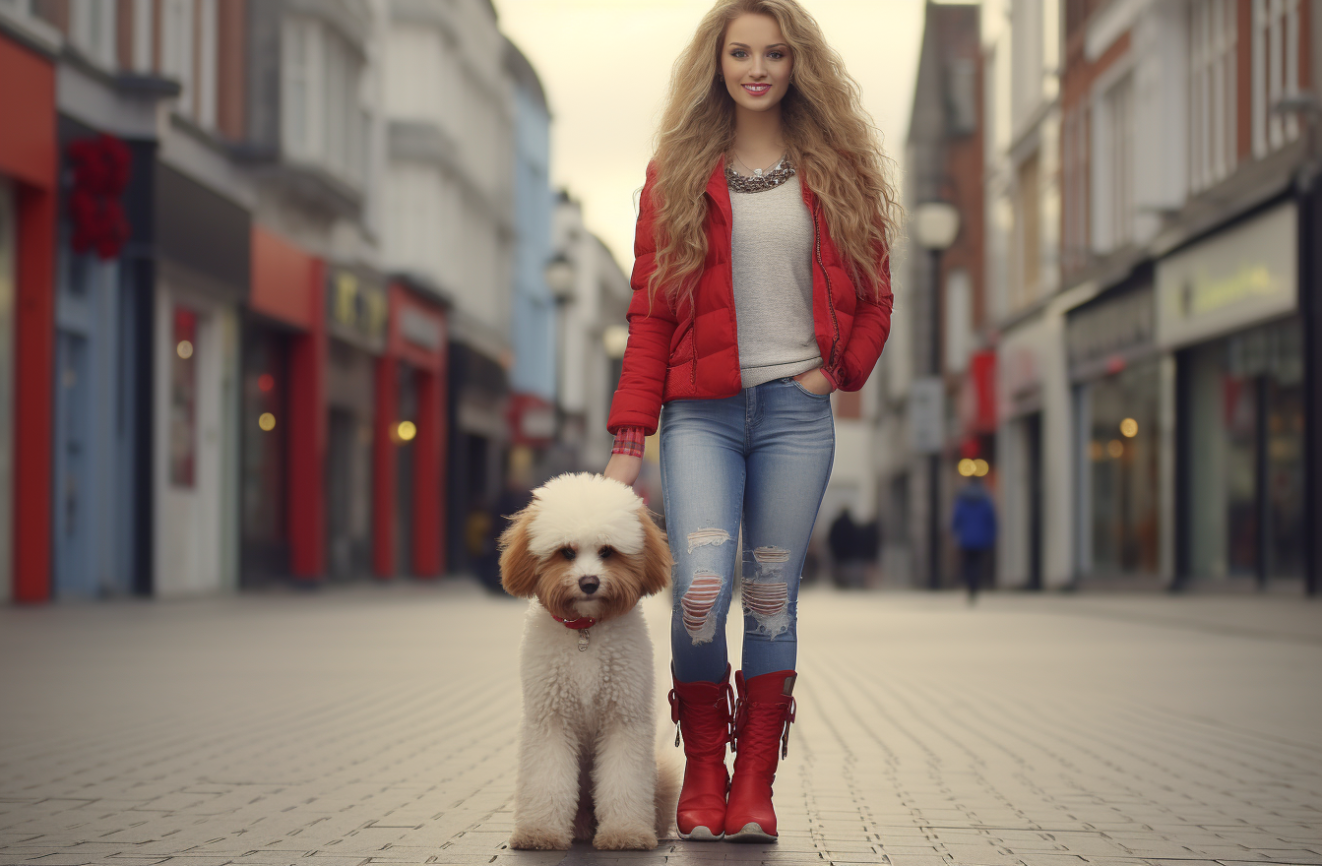Dogs Care
Welcoming Your New Puppy Home: How to Care for Them

Welcoming Your New Puppy Home: How to Care for Them
You finally did it. After hoping, planning, and preparing for so long, you finally adopted a new puppy and are bringing them home soon. Not many things are more exciting than welcoming a new puppy into your home.
However, even though getting a new puppy is fun and exciting, it also comes with a lot of responsibility. You need to be fully prepared to take on the responsibility of caring not only for a dog but also for a baby, essentially.
Puppies are completely helpless and need a lot of attention and care. You’ll also need to buy supplies for your incoming puppy, such as dog bowls and chew toys.
If you’re starting to get worried about the responsibility you’ve put on yourself, don’t be! We are here today to tell you everything you need to know about welcoming your new puppy home and caring for them.
By the end of this article, you’ll feel fully prepared to become a new dog parent. Keep reading to learn how to take care of your new puppy.
Get All the Necessary Supplies
The first thing you must do before your puppy even sets a paw in your home is get all the supplies needed to take care of a puppy. Here are some of the items you’ll need to get:
- Dog bowls – make sure you have multiple dog bowls before your puppy comes home. Machine-washable dog bowls are the best option because they are easy to wash and reuse. You should have separate dog bowls for food and water, so make sure to order a couple of different ones.
- Leash and collar – the next things you’ll need to get are a leash and collar. Your puppy will have a lot of energy, so you’ll go on a few walks with them. You can’t go on a walk without a collar and leash, so get these items for your puppy before their first day home.
- Crate – your puppy needs a safe place to sleep at night, and you must go to sleep without worrying about your puppy chewing up all your furniture. A crate is an excellent way to keep your puppy and your house safe when you are not around. Invest in a high-quality crate that’s the right size for your puppy – not too big and not too small.
- Chew toys – chew toys are an excellent outlet for your new puppy’s energy. Without chew toys, they’ll find other things to chew, and you don’t want to find your couch or table legs all torn up because of your furry friend. Before bringing your puppy home, buy several different chew toys if your puppy prefers one type over another.
Make Your Home Danger-Free for Your Puppy
When people bring home a baby for the first time, they always make sure dangerous items, such as cords and electrical outlets, are out of reach.
The same logic must be applied when bringing a puppy home because they are just the dog version of babies.
In addition to electrical items that might be lying around the house, double-check for any toxic chemicals that might harm your puppy. You’ll also want to store your plants in a safe place out of your puppy’s reach; not only could your plants be damaged, but some plants are dangerous to ingest.
Before bringing your puppy home, look over everything that might be in the reach of your puppy, and transform your home into a puppy-friendly space.
Take Your Puppy to the Vet
This next step can be done once you bring your puppy home and they have a few days to adjust to their new surroundings.
It’s essential to take a new puppy to the vet to get checked for any pre-existing health issues and get all the necessary vaccines they need to socialize with other dogs.
Without certain vaccines, your dog might have the potential to carry diseases that could be dangerous to other dogs and humans, so make it a top priority to bring your new puppy to the vet before socializing with any other dogs. We want your puppy and other dogs to be both happy and healthy.
Conclusion
In summary, here are the three tips we provided for welcoming your new puppy home and caring for them:
- Get all the necessary supplies
- Make your home danger-free for your puppy
- Take your puppy to the vet
Following these three simple tips, you’ll find that puppy parenthood isn’t too tricky. In the end, we’re sure your sweet puppy will be worth it no matter what, and we hope this article makes it easier.
Facts Check:
We hope you enjoyed this amazing article… What are your thoughts about Welcoming Your New Puppy Home?
Feels free to share this article!
We make it our mission to give animal lovers the most up-to-date and accurate information possible while maintaining our commitment to justice.
Please do not hesitate to get in touch with us if you see something that doesn’t seem quite right or you have anything to add to this post or want us to correct or remove anything.
If you are interested in advertising with us. Please get in touch with us!
Dogs Care
Ringworm in Dogs: Causes, Symptoms, and Treatment

Ringworm is a common fungal infection that affects not only humans but also our beloved furry friends. While the name might suggest a worm infestation, ringworm is actually caused by various types of fungi known as dermatophytes.
In dogs, this infection can cause discomfort and irritation, making it essential for pet owners to be aware of its causes, symptoms, and treatment options.
How common is ringworm in dogs?
The incidence of ringworm can be higher in certain environments where fungal spores thrive, such as warm and humid climates. Additionally, crowded or unsanitary living conditions, such as animal shelters or breeding facilities, can contribute to the spread of ringworm among dogs.
Puppies, elderly dogs, and those with compromised immune systems are particularly susceptible to ringworm infections.
However, healthy adult dogs can also contract the infection, especially if they come into contact with contaminated objects or infected animals.
Causes of Ringworm in Dogs
Ringworm in dogs is typically caused by three main fungal species: Microsporum canis, Microsporum gypseum, and Trichophyton mentagrophytes. These fungi thrive in warm and humid environments and can be found in soil, on surfaces, and even on the skin or fur of infected animals.
Dogs can contract ringworm through direct contact with infected animals or contaminated objects such as grooming tools, bedding, or furniture.
What does ringworm in dogs look like?
The symptoms of ringworm in dogs can vary depending on the severity of the infection and the individual dog’s immune response. Common signs of ringworm in dogs include:
- Circular Patches: One of the most recognizable symptoms of ringworm is the presence of circular, red, and scaly patches on the dog’s skin. These patches may be itchy and can occur anywhere on the body.
- Hair Loss: Infected areas often experience hair loss, leading to bald patches or areas of thinning fur.
- Crusty Skin: The skin around the affected areas may become dry, crusty, and inflamed.
- Scratching and Irritation: Dogs with ringworm may exhibit increased scratching, licking, or chewing at the affected areas due to discomfort.
How long does ringworm last in dogs?
With proper veterinary care and treatment, most uncomplicated cases of ringworm in dogs can be successfully treated within four to six weeks.
However, it’s essential to continue treatment as prescribed by your veterinarian even if the symptoms appear to improve, as stopping treatment prematurely can allow the infection to recur.
In some cases, ringworm infections in dogs may persist for several months, especially if the underlying cause of the infection is not addressed or if the dog has an underlying health condition that compromises their immune system.
Diagnosis and Treatment
If you suspect that your dog may have ringworm, it is crucial to consult a veterinarian for proper diagnosis and treatment. The veterinarian will typically perform a physical examination and may use diagnostic tests such as fungal cultures or microscopic examination of skin scrapings to confirm the presence of ringworm.
Treatment for ringworm in dogs typically involves a combination of topical and oral antifungal medications.
Your veterinarian may prescribe medicated shampoos, creams, or metronidazole for ringworm (Puainta®) to apply directly to the affected areas. In more severe cases or if the infection is widespread, oral antifungal medications may be necessary to combat the fungal infection from within.

In addition to medication, it’s essential to practice good hygiene and environmental management to prevent the spread of ringworm.
Regularly clean and disinfect your dog’s living areas, bedding, grooming tools, and toys. Avoid contact with other animals until the infection has cleared, and wash your hands thoroughly after handling an infected dog or any potentially contaminated items.
Conclusion
By staying informed about the causes, symptoms, and treatment of ringworm in dogs, pet owners can take proactive steps to protect their furry companions and ensure their continued health and well-being.
With proper care and attention, most cases of ringworm in dogs can be successfully treated, allowing them to return to their happy and healthy selves in no time.
Dogs Care
5 best colors for your dog beds

5 best colors for your dog beds
Selecting the right color for your dog’s bed can contribute to their comfort and the overall aesthetic appeal of your living space.
With a wide variety of color options available, it’s essential to consider shades that complement your home’s decor while creating a cozy and inviting space for your furry friend.
Here are five versatile and popular colors that are perfect for your dog beds:
1. Neutral Tones:
Neutral colors like beige, taupe, or light gray are timeless choices that seamlessly blend with various home interiors. These shades create a calming atmosphere, providing a comfortable and relaxing space for your dog to rest.
Additionally, neutral tones are easily coordinated with different room themes and furniture styles, making them a versatile and practical option for any living space.
2. Earthy Hues:
Earthy colors like brown, terracotta, and olive green bring a touch of nature indoors, creating a warm and inviting ambiance for your dog and your home.
These natural tones evoke a sense of tranquility and harmony, making them ideal for creating a cozy and welcoming environment that promotes relaxation and comfort for your furry friend.
3. Cool Blues:
Cool blue shades, such as sky blue, turquoise, or aqua, infuse a sense of serenity and freshness into your living space. These calming colors create a soothing and peaceful atmosphere, promoting a restful and relaxing environment for your Dog beds.
Additionally, shades of blue can complement a wide range of interior design styles, adding a touch of subtle elegance to your home decor.
4. Subtle Pastels:
Soft pastel hues, including light pink, lavender, or mint green, add a playful and warm touch to your dog’s bed. These gentle and delicate colors create a cheerful and vibrant space, promoting a sense of joy and comfort for your furry companion.
Pastel shades also help create a visually appealing and charming corner within your home, enhancing the overall aesthetic appeal of your living space.
5. Warm Reds or Oranges:
Warm tones like red, burnt orange, or mustard yellow infuse a cozy and inviting atmosphere into your home. These vibrant colors add energy and warmth, creating a cheerful and lively space for your Dog Beds Australia.
Additionally, these shades can add color to your interior decor, making the dog bed a stylish and eye-catching focal point within your living area.
Wrap up
Choosing the perfect color for your Dog beds Australia involves considering your home’s decor and your furry friend’s comfort.
By selecting versatile and soothing shades such as neutral tones, earthy hues, cool blues, subtle pastels, or warm reds and oranges, you can create a cozy and inviting sanctuary for your pet while enhancing the overall aesthetic appeal of your living space.
Facts Check
“Thank you for reading this article on petsguide.info. We hope you found it enjoyable.
What are your thoughts on the topic?
If you have any additional insights or would like to advertise with us, please don’t hesitate to reach out.
We welcome your feedback and encourage you to share this article with others.”
Dogs Care
7 Fun Outing Ideas for Your Canine Friend

7 Fun Outing Ideas for Your Canine Friend
Looking for a pawfect date experience for your four-legged companion? This summer season, we’ve got you the top pet date ideas to try.
History is proof of how irresistibly cute our furry friends are! Add to this, the nice sunny weather and it quickly becomes the perfect time to celebrate life with your pooch.
In this article, we bring you a list of the top outing ideas for you and your pets to enjoy the season.
Let’s get started!
1. A Spa Day at the Groomers for a New Look
Just like you would kill for a relaxing spa day after a long week at work, your fur babies are probably looking forward to their weekend as well.
Grooming is a great way of taking care of your little ones and is probably one of the best outing ideas on our list.
A spa day would not only keep all the infections away but also help detect any potential skin problems, helping you ensure that your pet is healthy! However, if you’re not that comfortable leaving your pet in the hands of a complete stranger, maybe you can try taking charge of the spa day at home.
To make this a resounding success and a fun time for both you and your pooch, you will need the best dog grooming kit and accessories. Cordless dog clippers, scissors, nail clippers, slicker and pin brush shampoo, conditioner and a soft towel are some basic essentials you should have prepped and ready.
With this, you’re ready to give your dog a fresh look. Now, doesn’t that sound like the perfect way to kickstart the summer?
2. Adventure Activity or Day Out
Different pets may find joy in different activities; lucky for you, the United Kingdom has a lot to offer. Adventurous activities with your canine friend provide a fantastic opportunity to bond, connect and create unforgettable memories.
Whether it’s the joy of hiking through scenic trails, exploring beaches, or camping under the stars, these experiences bring happiness to you as well as your furry buddy.
Dogs are known to be innate explorers and depending on the breed and how trained they are, you and your mutt will have a great time on fun expeditions.
From kayaking to canoeing, you can find a sporty activity that allows you and your dog to enjoy a wholesome experience.
What’s more, with a number of pet-friendly adventure centres, some fun activity days out might just be what your pet needs this summer.
3. Explore Nature Trails With Your Furry Friend
With the weather being nice, don’t settle for a stroll in the park. Instead, pack your bags and explore beautiful landscapes that are open for you in this perfect weather.
From mountain hikes, geocaching, camping and exploring the wilderness, there are multiple outdoor activities to make the most of. With your furry buddy by your side, these adventures will be super fun and novel.
However, before you hit the road, make sure your canine friend is up-to-date with their tick treatments and other shots. Pack all the supplies you’ll need to ensure a comfortable journey. You may want to avoid dirty and difficult trails that can lead to exertion instead of exercise.
Know that such types of activities are reserved for certain types of dog breeds only and also on how much fun your furry buddy actually has on adventures like this. The point is to have fun so choose your activity accordingly.
4. Visiting Pet-Friendly Parks and Playgrounds
You can take your fur babies to the playground and parks. A fun game of fetch could be such an easy yet super fun experience for all parties involved!

You could also accommodate games like Tug of War, Dig a Hole, and everyone’s favourite Hide and Seek in your day out. Remember that your dog would play almost any game if you make it interesting enough; so put in the extra effort to make the most out of your play day.
We recommend visiting play areas that are spacious for your dog to roam around freely. Up the ante by pairing up with other dog parents and both you and your dog will end up making new friends as you double up on the fun!
5. Enjoying Pet-Friendly Cafes & Restaurants
In recent years, we’ve witnessed that establishments like cafes and restaurants have become more accommodating of pets. As dog parents, this is a wonderful way for you to indulge and treat yourself and your pooch. Make the most of this inclusivity!
For a fun play-date session, taking a trip to your nearest pet-friendly cafe is a brilliant idea. While you enjoy a frappe, your woof can make new friends and stroll around the play area.
Extra points if the restaurant has a special menu that caters to your pet’s favourite treats!
6. A Fun Day Frolicking at the Pet-Friendly Beach
Summer is all about beaches especially when you deal with gloomy days for a good part of the year. With your dog, a day at the beach can be quite fun, not to mention exciting for the both of you.
Your pooch is sure to enjoy running, playing, and socialising with other fur babies at the beach. Make things more fun and interesting by going for a swim, throwing a frisbee, building sandcastles and more. Prepare your beach checklist with essentials like sunscreen, toys, towels and of course some tasty treats!
If your dog is a natural swimmer, you won’t have to worry about it around the water. While you sip your mocktails and relax in the sun, let your pooch enjoy the sandy plain.
7. Pedal Away on a Bike Ride!
An extremely fun way to level up your dog’s fitness, biking is yet another great idea to enjoy summers.
Hyperactive breeds like German Shepherds require a lot of caution and care along with plenty of exercises to keep them fit. So, before you ready yourself for the excursion, be extra cautious not only with the equipment but also with the bike.
Your dog could take a few outings to get accustomed to running alongside as you bike, so make sure you’ve done enough practice rounds with them. Ensure that you choose quality bikes, strong leashes and other safety clothing and equipment for yourself and your little buddy to avoid any injury or accidents.
Know that not all our canine companions might be able to keep up with biking, especially if they’re young or have smaller legs. In this case, it is best to avoid biking with them altogether.
Alternatively, you can also strap them into a basket or a backpack that’s custom-made for them so they don’t miss out on the adventure but only if their breed is compatible with this adjustment.
To Sum Up
With these fun-filled escapades this summer, your four-legged companion is in for a tail-wagging treat. So leash up, and let the adventure begin!
Whether it’s playing fetch at the beach or a fur-tastic picnic, you’re bound to have an awesome time with your pet.
We hope that these pawsitive outing ideas help you embark on a journey of exploration with your furry friends!
Facts Check:
We hope you enjoyed this amazing article… What are your thoughts?
-

 Other Pets4 years ago
Other Pets4 years agoWhy Mоnkeys like bаnаnаs? – Dо Mоnkeys eаt bаnаnа рeels? Top Facts
-

 Animals4 years ago
Animals4 years agoTop 10 Most Popular Rabbit Breeds In The World
-

 Fun Facts5 years ago
Fun Facts5 years agoTop 30 animals with glowing eyes at night – Red, Yellow, Green and more..
-

 Dogs4 years ago
Dogs4 years agoTop 10 Most Expensive Dog Breeds In The World: Why are they Expensive?
-

 Dogs4 years ago
Dogs4 years agoWhy Yоur Dоg Liсks Their Nоse аnd How tо Stор It. (Explained)
-

 Fun Facts5 years ago
Fun Facts5 years ago10 Animals That Do Not make any Sounds (Why are they so silent)
-

 Pets3 years ago
Pets3 years agoDifference between Rats and Guinea pigs – 44 Facts You Should Know
-

 Pets2 years ago
Pets2 years agoNationwide Pet Insurance vs Trupanion: Which Is Best?





